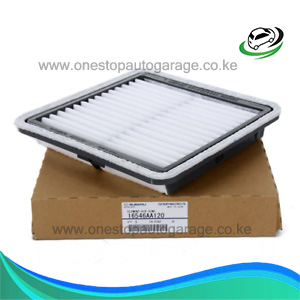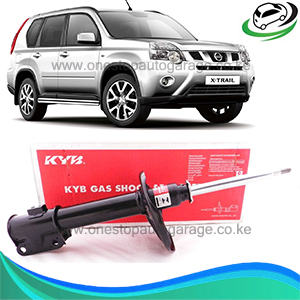-10%
Get Toyota Avensis ZRT270L Rack End Sub Assy SR-T480 in Kenya
The rack end sub assembly, also known as the inner tie rod, is an integral component of a vehicle’s steering system. It connects the steering rack to the outer tie rod, transmitting the driver’s input from the steering wheel to the wheels. This component plays a crucial role in maintaining directional control, stability, and overall driving safety. In this detailed explanation, we’ll cover its function, design, benefits, common issues, and maintenance tips.
Functions of the Rack End Sub Assembly
- Transmission of Steering Input
The primary function of the rack end is to transmit the rotational movement from the steering rack to the outer tie rod, which then directs the wheels. This ensures that the vehicle responds accurately to the driver’s input. - Absorbing Road Vibrations
The rack end also acts as a buffer to reduce the impact of road vibrations on the steering system. This helps provide a smoother and more comfortable driving experience. - Alignment Stability
By working in tandem with the outer tie rod, the rack end helps maintain proper wheel alignment. This stability is vital for safe and efficient vehicle handling.
Components of the Rack End Sub Assembly
The rack end typically comprises several components that work together to ensure its functionality:
- Ball Joint or Socket
This component allows the rack end to pivot, providing the flexibility needed for steering and absorbing road shocks. - Threaded Shaft
The threaded section connects the rack end to the outer tie rod and allows for fine adjustments during wheel alignment. - Protective Boot
A rubber or plastic boot encases the rack end, protecting it from dirt, moisture, and debris that could lead to wear and tear.
Benefits of the Rack End Sub Assembly
- Improved Steering Precision
A well-functioning rack end ensures accurate steering response, enhancing the driver’s ability to control the vehicle. - Enhanced Safety
By providing stable and reliable wheel alignment, the rack end minimizes the risk of accidents caused by poor vehicle handling. - Extended Tire Life
Proper wheel alignment facilitated by the rack end reduces uneven tire wear, extending the life of the tires and lowering maintenance costs. - Comfortable Driving Experience
The ability of the rack end to absorb road vibrations contributes to a smoother ride. - Cost-Effective Maintenance
Compared to other steering system components, the rack end is relatively inexpensive to replace, making it a cost-effective option for maintaining vehicle performance.
Common Issues with Rack End Sub Assemblies
- Wear and Tear
Over time, the ball joint or socket can wear out, leading to looseness in the steering system and reduced handling precision. - Boot Damage
The protective boot can crack or tear, exposing the rack end to contaminants that accelerate wear and corrosion. - Alignment Problems
A damaged or worn rack end can cause misalignment, resulting in uneven tire wear and difficulty steering. - Noise and Vibrations
Faulty rack ends can produce clunking or knocking noises, especially when driving over bumps or during sharp turns. - Steering Play
Excessive play in the steering wheel is often a sign of a failing rack end, indicating the need for inspection or replacement.
Maintenance Tips for Rack End Sub Assemblies
- Regular Inspections
Periodically check the rack end and its protective boot for signs of wear, damage, or leaks. Early detection can prevent more extensive steering system issues. - Wheel Alignment Checks
After any repair or replacement involving the rack end, ensure the vehicle undergoes a proper wheel alignment to maintain optimal handling and tire wear. - Lubrication
If applicable, ensure the ball joint or socket is adequately lubricated to minimize friction and wear. - Replacement When Necessary
Replace the rack end as soon as signs of wear, damage, or steering instability appear. Ignoring these issues can compromise vehicle safety and lead to costly repairs. - Protective Boot Maintenance
Inspect the boot for cracks, tears, or dislodgement. Replace damaged boots to prevent contaminants from reaching the rack end. - Professional Inspections
Have a professional mechanic inspect the steering system during regular vehicle maintenance to ensure all components, including the rack end, are in good condition.
Signs of a Failing Rack End Sub Assembly
- Steering Instability
Wandering or pulling to one side may indicate a damaged rack end. - Excessive Steering Play
If the steering feels loose or unresponsive, the rack end might be worn. - Clunking or Knocking Sounds
Unusual noises from the steering system when driving over bumps or making sharp turns could signal a problem. - Uneven Tire Wear
Visible signs of uneven wear on the front tires may point to misalignment caused by a faulty rack end. - Difficulty Turning
Increased effort required to turn the steering wheel can result from a failing rack end.
Replacement and Installation Process
Replacing a rack end requires specialized tools and expertise. The general process includes:
- Lifting the Vehicle
Securely raise the vehicle to access the steering system components. - Removing the Outer Tie Rod
Disconnect the outer tie rod to gain access to the rack end. - Detaching the Rack End
Unscrew the rack end from the steering rack. - Installing the New Rack End
Screw the new rack end into place, ensuring proper alignment and torque specifications. - Reattaching the Outer Tie Rod
Connect the outer tie rod to the new rack end and secure it. - Alignment Adjustment
Perform a wheel alignment to ensure proper steering and tire wear.
Conclusion
The rack end sub assembly is a vital component of a vehicle’s steering system, contributing to safety, precision, and comfort. Regular maintenance and timely replacement are essential for optimal performance and longevity. By understanding its functions, benefits, and common issues, vehicle owners can ensure a safe and enjoyable driving experience. Whether you’re a car enthusiast or a professional in the automotive industry, keeping the rack end in excellent condition is crucial for maintaining the overall integrity of the steering system.
Follow us on Facebook for more parts.



